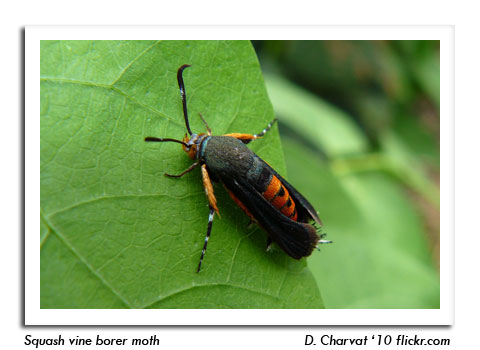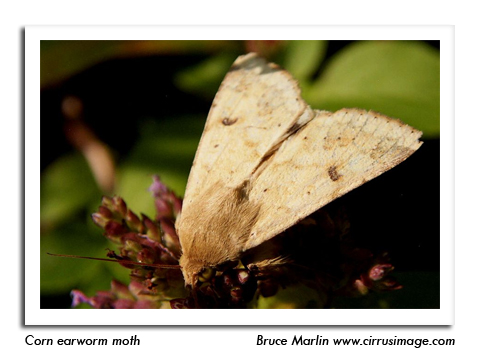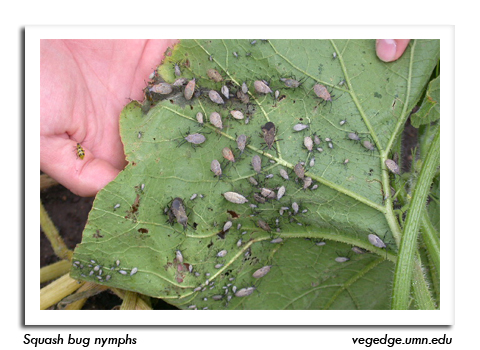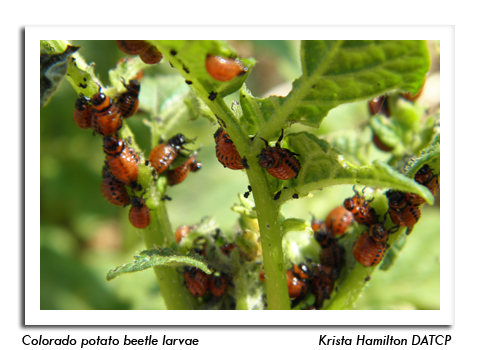
 |
|
|
Vegetables
Volume 59 Number 11 Date 07/17/2014 SQUASH VINE BORER - The early-stage larvae of this insect are excavating the stems and runner vines, causing squash plants to wilt. Closer examination of the vines should reveal entrance holes from which their sawdust-like frass is expelled. Varieties most susceptible to squash vine borer damage are 'Blue Hubbard', 'Boston Marrow' and 'Golden Delicious', while 'Butternut', 'Dickenson Pumpkin' and 'Green Striped Cushaw' have shown resistance. TOMATO HORNWORM - Moths are active and laying eggs on the undersides of tomato leaves. Tomato growers who have experienced past problems with this pest should inspect the undersides of leaves for individually laid eggs that are smooth, spherical and pale green in color. Once the eggs hatch, the larvae grow very rapidly and quickly defoliate plants. Spot treatment may be justified for infestations of one or more larva per plant on a minimum of 10 plants. Prompt removal of the larvae is the best control measure. ONION MAGGOT - Second generation flies are emerging near Madison, La Crosse, Spring Green and other locations where 1,950 GDD (base 40°F) have been surpassed. Emergence is anticipated near Fond du Lac, Hancock and Waukesha in the week ahead. Management of the summer generation is less critical than spring and fall populations since egg desiccation and mortality rates are higher at warmer temperatures, but season-long sanitation is still important for preventing future infestations. Second brood eggs are deposited near previously-damaged onions. CORN EARWORM - Fourteen specimens were captured in the Green Lake County pheromone trap and 23 others were reported from sites in Dane, Dodge and Fond du Lac counties during the last monitoring period. The primary migration of moths from the southern U.S. could begin by late July or early August. Participants in the corn earworm trapping network should begin replacing lures on a weekly basis. SQUASH BUG - Reports suggest these difficult-to-control insects are a common problem in pumpkin, squash and melon crops again this season. The treatment threshold for squash bugs is based on an average count of one egg mass per plant, although scouting for tiny eggs is often impractical in larger plantings. If the insects are numerous and wilting is observed, pyrethroid insecticides such as permethrin directed against the nymphs are an effective control. Growers should be aware that the efficacy of these materials is reduced at temperatures above 80°F and the smaller nymphs are more readily killed than the adults. Refer to UWEX publication A3422 "Commercial Vegetable Production in Wisconsin" for a list of registered insecticides. COLORADO POTATO BEETLE - The summer generation of beetles is expected to begin appearing in potatoes in the next two weeks. Pupation occurs in 7-10 days at this time of year and larval development proceeds much more rapidly under normal July temperatures. Summer beetles and all second generation larval stages are considered damaging. -- Krista Hamilton, DATCP Entomologist 





|
|
|